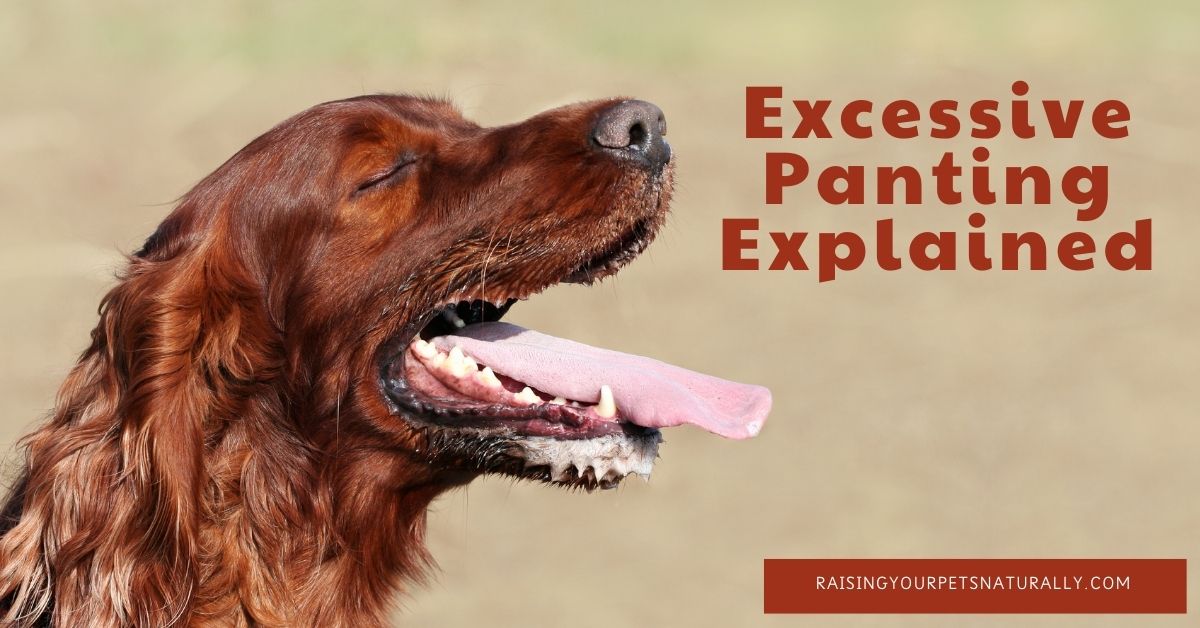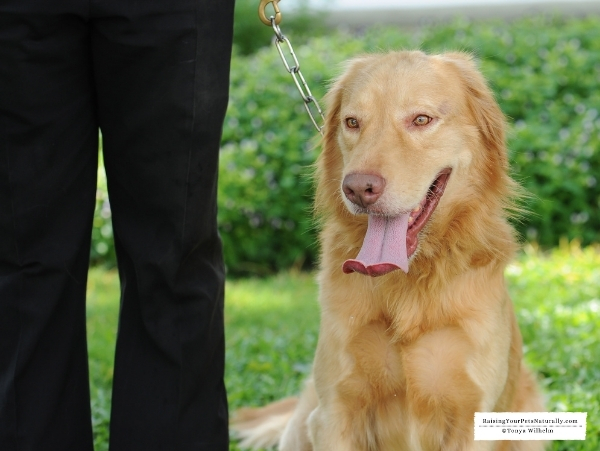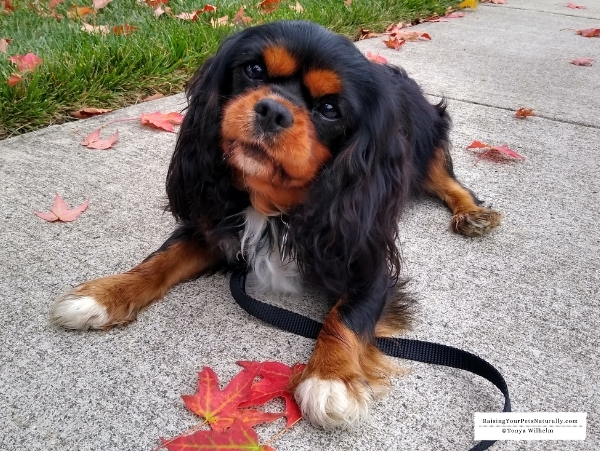Google Adsense—>

Why Do Dogs Pant a Lot?

Oh, Dexter. Dexter is my senior Cavalier King Charles Spaniel. He also has MVD (heart disease) and Chiari malformation and Syringomyelia. Together, these three things always have me on high alert when it involves his breathing or panting. My mom is always telling me, “Dogs pant.” But there is a difference between normal panting and an indication that something is wrong.
I wanted to dive into the topic of dogs panting a lot, with a special emphasis on senior dogs and Cavalier King Charles Spaniels. The bottom line is I write and research dog topics as they relate to my current pup. And we all know, it’s all about Dexter.
Why Do Dogs Pant?
Dogs pant for a variety of reasons. Dogs may pant due to stress, excitement, pain, or to cool themselves down. When a dog exerts himself whether because of exercise, stress or heat his heart rate increases. Because dogs do not have sweat glands for cooling, panting is a way for your dog to regulate his body temperature.
Normal Resting Respiratory Rate for Your Dog
As with anything, the first thing you should do in order to determine something is out of the ordinary for YOUR dog, is to know his normal. Dr. Rasa G. Ziemiene, co-founder of Dogo informed me that, “Normal breathing rate for our pups when they are asleep is 15-30 breaths/minute. If you notice it is higher when you observe your pup asleep, you should consult a veterinary doctor to check your dog’s heart and lungs.“
How to Check Your Dog’s Resting Respiratory Rate
When your dog is resting or sleeping, watch his chest. Once you get a nice look, count the number of times his chest goes up and down over 15 seconds. Multiply that number by 4, and you will have your dog’s resting respiratory rate.
I find it best to start with a daily chart for tracking. This can be as simple as a computer document. You can note your dog’s name, age, date, behavior, etc., etc. Try taking his resting heart rate at the same time each day.
Normal Heart/Pulse Rate for a Dog
The other function I like to monitor is Dexter’s resting heart rate. A normal dog’s heartbeat ranges from 120-160 beats a minute. Puppies and smaller breed dogs tend to run on the higher end and larger dogs on the lower range.
How to Measure a Dog’s Heart/Pulse Rate
To measure your dog’s pulse, choose a time when he’s calm and relaxed. Place your hand or a stethoscope on the left side of his chest, by his elbow. Move your hand or stethoscope around until you can hear or feel his heartbeat. Count the number of beats in 15 seconds then multiply that number by 4 to give you his resting heart rate or pulse.
Signs that Your Dog’s Panting is Excessive

Once you have a baseline on your dog’s normal, you’ll be armed with more information on how to determine if he’s having a medical issue or even a medical emergency. If you found this blog article because you were googling and you think your dog is panting too much, sign off and head to your dog’s veterinarian or even the emergency clinic. It’s always better to be safe than sorry.
Lisa Davila BS-Biomedical Science Hospital Manager at Aggieland Animal Health Center in College Station Texas, provided me with a great visual. She said, “ When a dog has overheated, their tongue usually curls up, the gums turn dark red or purplish, they can produce ropey saliva, and the gums feel dry and tacky.” She also stressed that “Panting after exercise is normal; panting when they haven’t exerted themselves and it’s cool is not.”
Dr. Ziemiene continued by saying, “Dogs tend to hyperventilate (breathe very frequently) when they try to cool down after being exposed to high temperatures or vigorous exercise. Regular frequent inhales and exhales on a hot day are usually a sign that the dog is hot and is naturally cooling themselves down. However, extremely rapid short breaths could indicate that your dog is unwell. Short breaths don’t take in enough oxygen to the lungs.”
Dr. Ziemiene went on to say, “After vigorous exercise, the dog’s breathing rate can increase 10x. And that is still “normal.” Dog’s age, breed, weight, and fitness level together with the outside temperature can affect the rate of breath. However, if your dog is not calming down 10 minutes after they were brought back to a cool room and offered water, you should keep a vigilant eye on your dog.”
Sara Ochoa, DVM and consultant for doglab.com recommends, “If they are panting even after 15 minutes of being inside in the cooler air, then this would be excessive panting Also, if your dog has not been outside playing and is just panting, there may be something wrong. This could be a sign of pain but could be due to heart disease or another medical issue. If they continue to pant or seem very restless, it would be best to see a vet. Panting is often a sign that something major is going on. The quicker your dog receives medical care the better.”
Heavy Panting and Congestive Heart Failure
Since Dexter does have the beginning stages of MVD, I wanted to learn more about heavy panting and heart disease. Theresa Fossum DVM, MS, PhD Diplomate ACVS, and author of Small Animal Surgery explained, “One cause of heavy breathing can be heart failure. A dog may have heart disease but will likely not show many signs until they develop congestive heart failure (CHF). Then, you may notice that they are more fatigued than normal, they may not want to exercise, they may develop a cough because of the fluid in their lungs, and they may breathe more rapidly. When fluid builds up in the lungs, a condition known as pulmonary edema, they will often have difficulty breathing. As the fluid builds up, your dog may have a reduced appetite, and they may have trouble sleeping.”
Dr. Fossum then went on to say, “The most common cause of CHF in dogs is a condition known as mitral valve disease (MVD). Some dog breeds, such as Cavalier King Charles spaniels, are prone to MVD. In most cases the mitral valve, which is the valve between the left atrium and the left ventricle degenerates and does not properly close, which allows blood to flow in the wrong direction. Instead of blood being pumped to the aorta and the body, blood flows backwards through the mitral valve into the left atrium. This causes the heart to distend and the muscle to weaken even more over time.”

“Your veterinarian will listen to your dog’s heart to see if they can hear a murmur. They will likely also take radiographs to determine the size of the heart and to see if there is fluid in the lungs. They may refer you to a specialist to have an echocardiogram done. An echocardiogram can help determine the exact lesion in the heart and provide information on its severity. For example, the echocardiogram may show that the mitral valve leaflets are not working properly and that the heart muscle contractions are weak. They will also check to see if other causes of heart failure are present such as a stenosis impending blood flow into the aorta (known as subaortic stenosis), if they have a hole in the septum of the heart which divides the chambers (such as ventricular septal defect), or if they have a congenital abnormal vessel connecting the pulmonary artery and the aorta (known as a patent ductus arteriosus).”
When You Should Be Concerned
Once again, if you aren’t loving the way your dog is breathing, panting, or acting head to his veterinarian. But, here are few key points from the sources above.
- Restless and uncomfortable
- Dark red, purple, or tacky gums, thick drool
- Resting breaths over 30
- Can’t catch his breath or breathe
- Stumping gait or can’t get up
- Vomiting or diarrhea
- Temperature above 103 Fahrenheit
- Breathing is not normal after 10 minutes of rest in a cool area
Your questions or comments are welcome below.
Are you looking for even more ways to stay up to date with Raising Your Pets Naturally? Sign up for the newsletter for more tips and promotions. Don’t forget to be social and Like, Follow and Subscribe. Comments below are always welcome.
Facebook Twitter Pinterest Instagram YouTube
 |
 |
 |

If you found my blog helpful, please consider a small contribution. Dexter and I thank you! |
Google Adsense—>



